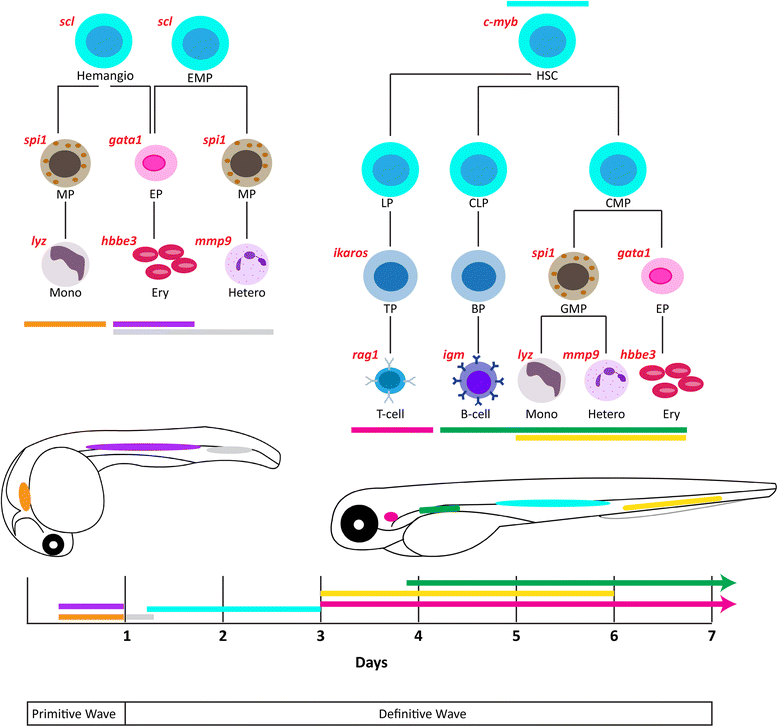Zebrafish as a model for leukemia and other hematopoietic disorders
- PMID: 25884214
- PMCID: PMC4389495
- DOI: 10.1186/s13045-015-0126-4
Zebrafish as a model for leukemia and other hematopoietic disorders
Abstract
Zebrafish is an established model for the study of vertebrate development, and is especially amenable for investigating hematopoiesis, where there is strong conservation of key lineages, genes, and developmental processes with humans. Over recent years, zebrafish has been increasingly utilized as a model for a range of human hematopoietic diseases, including malignancies. This review provides an overview of zebrafish hematopoiesis and describes its application as a model of leukemia and other hematopoietic disorders.
Figures

References
Publication types
MeSH terms
LinkOut - more resources
Full Text Sources
Other Literature Sources
Medical

